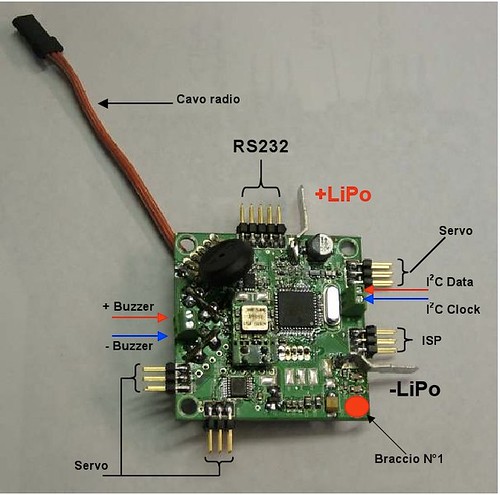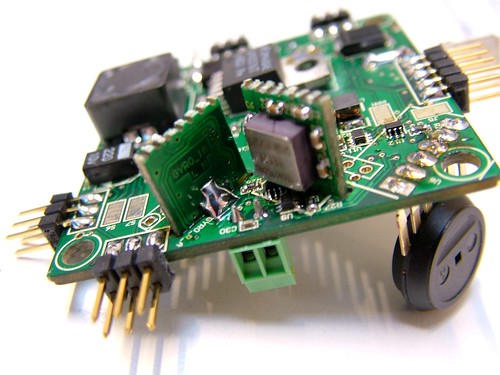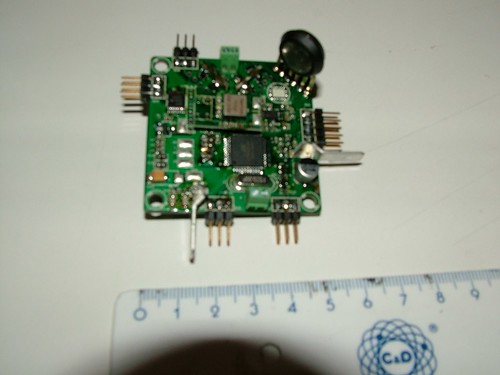But they were pretty low-key about it. As I walked into the Future of Flight Aviation Center in Mukilteo, WA, a half hour north of Seattle, I saw little activity. It was after hours, and the hangar-like building was nearly deserted except for the futuristic planes suspended from the ceiling—Burt Rutan’s “Quickie” and a Beechcraft Starship—and part of a Boeing 787 Dreamliner fuselage on the display floor. It was a bit like “Star Wars” meets “Night at the Museum.”
Tom Nugent, the co-founder and president of Kent, WA-based LaserMotive, greeted me and said they were almost ready for showtime. A small team of engineers divided its attention between the back of a command truck and the adjacent trailer that held the laser optics equipment that would make the show possible. Two German guys who hadn’t slept in days (and were still on Munich time) were sprawled out on deck chairs in front of computer monitors like they were playing a video game. One held a remote controller that he used to guide a “quadrocopter”—a small, 1-kilogram, square-shaped flying contraption with blinking lights and four spinning rotors—made by their company, Ascending Technologies.
Jan Stumpf and Michael Achtelik, the co-CEOs of Ascending Technologies, partnered with LaserMotive to perform this feat last night. The goal: to use a laser to power an aircraft in continuous flight for about 12 hours (far longer than its battery would last without recharging, which is only about five minutes). That would be a world record, by a long shot, for the longest free flight of an electric vehicle.
Indeed, this demonstration is a big deal for the future of electric planes, said Barry Smith, the executive director of the Future of Flight facility. Imagine putting a laser on top of every cellular tower, he said, so that certain types of unmanned aerial vehicles (UAVs) would never need to land to recharge or refuel. That could potentially revolutionize communications, surveillance, and security and defense applications. Longer term, it could even impact the long-held dream of powering manned aircraft with electricity instead of jet fuel—though that is very far off.
For now, Nugent says, “The significance is we’re going to show this quadrocopter, and any aerial vehicle [of this size], will be able to fly effectively forever. It’s no longer limited by battery capacity.”
LaserMotive has done smaller flight tests before, but not on a free-flying vehicle like this. The company is best known for winning the $900,000 NASA Power Beaming Challenge last year, in one of the levels of the “Space Elevator Games.” That involved using a laser to power a climbing robot up a cable to a certain height (1 kilometer) at a certain speed (about 9 mph). But lately the company has been targeting UAVs as a big commercial application of its wireless power technology. (The next level of the NASA challenge, which was supposed to happen later this year, is still up in the air, so to speak.)
“Goggles on!” someone shouted, and we all complied. That meant the infrared laser, which puts out about 200 watts of light power, was switching on. The beam was directed using a series of mirrors and optics and shot out the top of the trailer. You couldn’t see it with the naked eye except for a reddish halo on the 50-foot ceiling. At the same time, the quadrocopter lifted off (under its own battery power), guided by Stumpf, and floated up to meet the beam, about 30 feet off the ground (see left).
“Not centered,” Nugent said. Then the computer vision system of LaserMotive’s setup kicked in. Software and cameras aligned with the path of the laser beam tracked the vehicle’s position, and positioned the beam so it hit the photovoltaic cells on the underside of the craft; those solar cells transformed the laser’s energy into electricity to continuously charge the quadrocopter’s battery.
With that, all human corrections fell away, and it was just a drone hovering eerily in space, rotors humming quietly. It swayed a few feet from side to side, and the laser tracked it. It was about 7:40 pm.
This is the boring part, Nugent said. And boring is good. Exciting is bad. For the next 12 hours, if all went well, nothing more would happen. The craft would stay up all night (as would the crew),and sometime after 7:30 am, it would come in for a choreographed landing in front of 50-odd media and dignitaries. But anything could happen overnight—mirrors in the optical system could overheat and malfunction, or something in the craft or its solar cells could break, or software could crash. There’s no way to know except to do it.
In the meantime, Nugent filled me in on the business prospects of LaserMotive, which he co-founded in 2007. The company is out fundraising—talking with angel investors, angel groups, and venture capitalists—as well as trying to land more contracts with corporate and government partners. One new market has emerged: beaming power to cellular communication towers in places where running a new power line or otherwise upgrading power equipment is too expensive. As for UAVs, Nugent said, the plan is to show potential customers (presumably UAV companies and government labs) that the power-beaming approach works in flight—perhaps at distances up to a kilometer or two. The first applications might be in disaster relief or military scouting operations.
I also took the opportunity to ask Jordin Kare, the co-founder of LaserMotive and a laser expert who worked on the “Star Wars” missile defense system in the 1980s, about the broader significance of what he was watching. “This is the first combination of power and control and duration,” Kare said. “What it really marks is being able to take an off-the-shelf vehicle and power it with a laser so it can do a lot more…The prospect of being able to keep airplanes and communication systems up in the sky forever is an amazing thing.”
On the practical side, Kare said an important factor in all this is how efficient laser systems have become. Although the current demo only converts about 10 percent of the power needed to drive the laser into flying the quadrocopter, it could be more like 20 percent once the team optimizes the technology. And beyond that, Kare thinks there might be some new way, some approach he hasn’t thought of yet, to make the craft’s solar cells better at squeezing more electricity out of the beam.
Until then, this world aviation record will have to do. This morning, in a quintessentially rainy Northwest setting, the quadrocopter came in for its landing a little after 8 am to a chorus of applause. Now maybe these guys can get some sleep—and get ready for the next big challenge in power beaming, whatever that might be."



